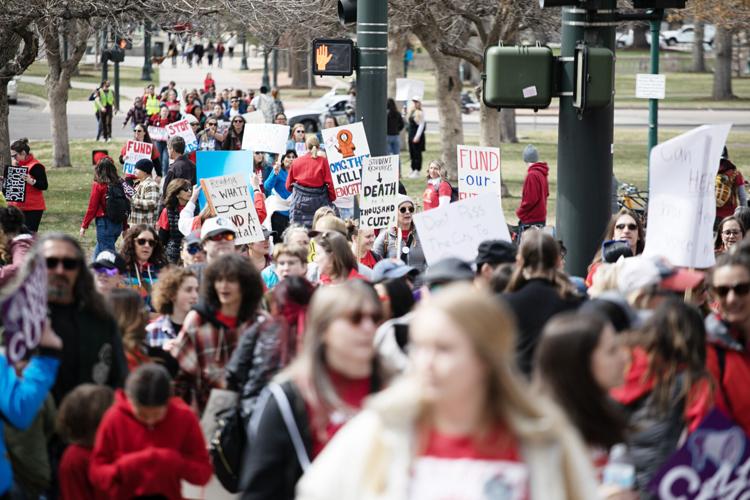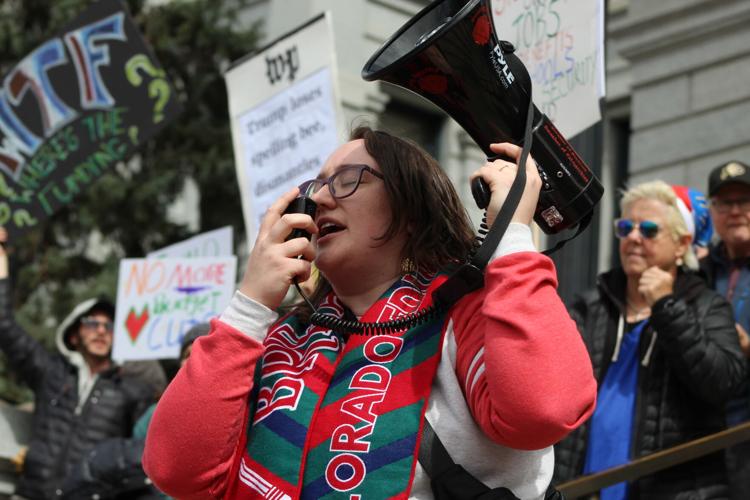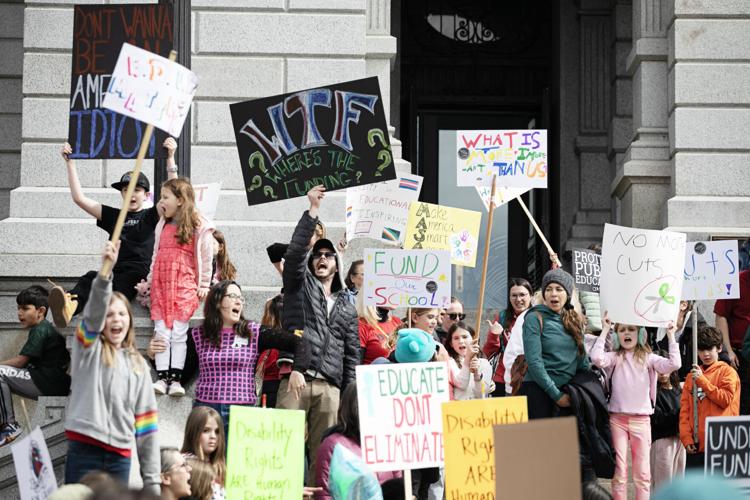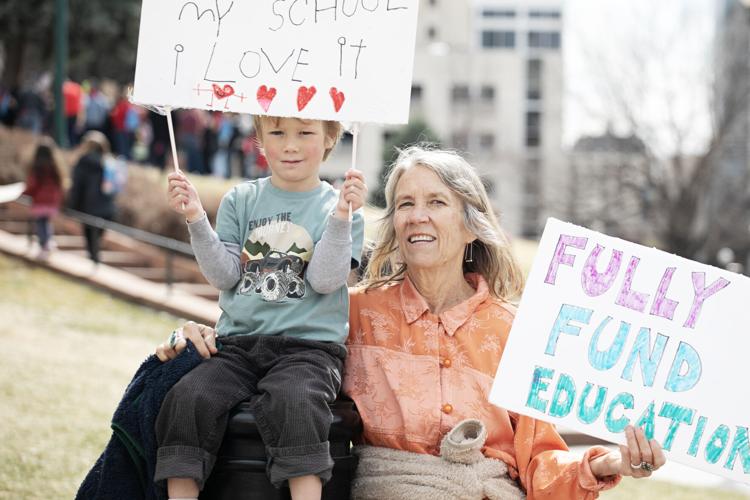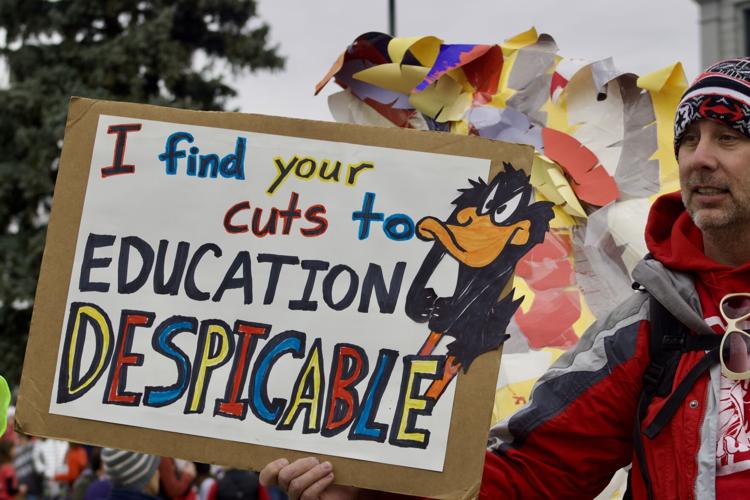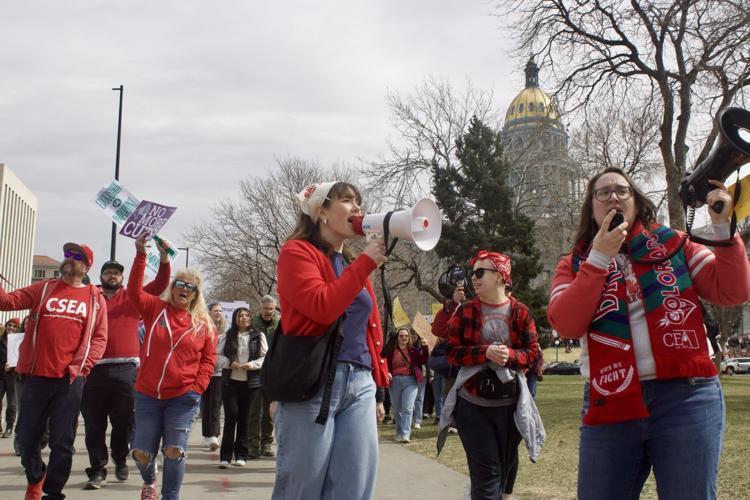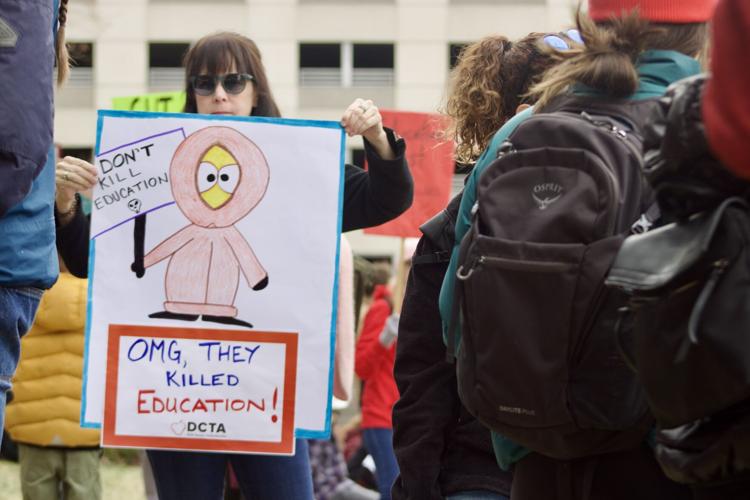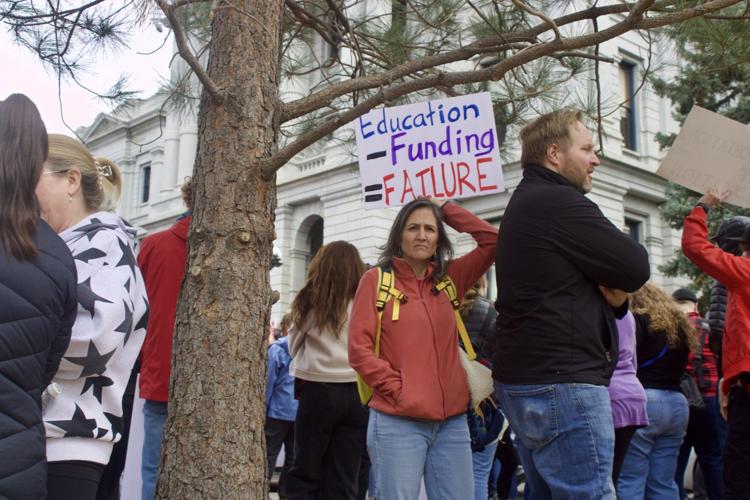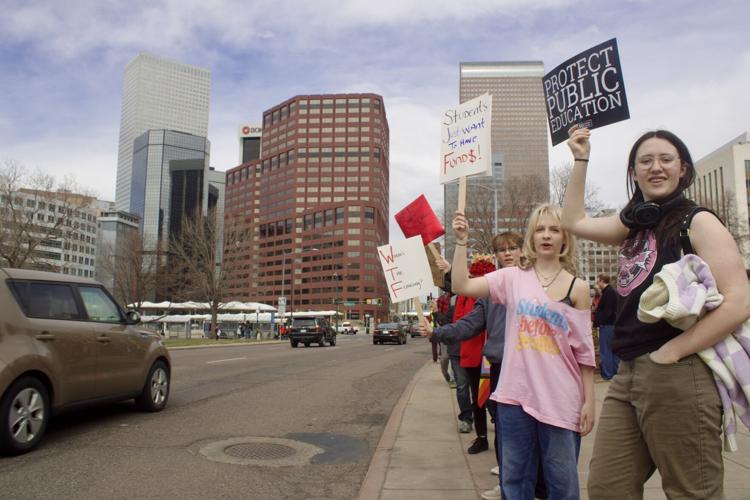Hundreds of students, educators protest funding shortage at state Capitol
“Don’t be fools, fund our schools!” chanted third and fourth-grade students from the Downtown Denver Expeditionary School in front of the state Capitol on Thursday.
Hundreds of students and educators carried hand-made signs to show their disapproval of the way Colorado funds education.
Eight-year-old Tula (her teacher did not provide her last name) was among the 100 students who skipped an afternoon class to join the protest.
“Our schools don’t have money,” said Tula, a third grader at the Expeditionary School. “We can’t afford supplies.”
Last fall, students at the Expeditionary School, which is blocks from the state Capitol, learned about the state’s funding challenges. Attending Thursday’s protest, their teacher Claire Adams said, was a real-world field trip of sorts.
“Students become really empowered to take their voice and use it,” Adams said. “The goal is for students to see themselves as change-makers.”
While some school districts across the state are on spring break this week, others — like Denver Public Schools and Aurora Public Schools — closed campuses, anticipating the “No More Education Cuts” statewide Day of Action.
All Aurora schools were closed, according to the school district. And in Denver, fewer than half of the district’s 200-some schools remained open.
According to the Colorado Education Association, which organized the event at the Capitol, the state’s schools are already underfunded by $4,000 per student each year. With a $1.2 billion budget shortfall this year, educators worry lawmakers will balance the budget “on the back of public education.”
Despite having paid off last yearwhat’s called the “budget stabilization” factor, or BS Factor, public K-12 remains underfunded by about $4 billion each year.
Introduced in 2010, the BS Factor is a tool the Colorado legislature used to reduce funding for school districts to balance the state budget, as required by statute.
Lawmakers eliminated the BS Factor last year, returning public education funding to 1989 levels.
“We know that we’re going to have to go to the ballot in 2026 to ask voters for a funding stream,” said Wendy Bergman, a Fort Collins high school teacher and organizer with the Colorado Education Association, the state’s largest teachers union.
Bergman added: “Enough is enough.”
Gov. Jared Polis has proposed changing how students in Colorado are counted to a single-year student count.
Because of something called “smoothing,” the state averages the student population for districts, like Denver, with declining enrollment from the five previous school years to determine the funding allocation.
Higher enrollment numbers in previous years mean school districts like Denver Public Schools received more funding than the actual number of students during what’s informally called “the October count.”
The October count in the fall each year is used to determine enrollment, which does fluctuate throughout the academic year, and funding.
In Colorado, dollars follow students.
“We do what we can with what we have, but the reality is we need more,” Bergman said.
Polis’ proposal, he has said, would save money and fund “actual students where they are, rather than where they were four years ago; thus, more equitably driving resources to where the need is.”
Polis criticized closing schools so students could participate in the protest.
“Kids belong in school,” Polis has said.
More than 1,000 Denver Classroom Teachers Association members attended the rally, said Rob Gould, a special education teacher and union president.
“Whenever the state shortchanges public education, students lose out,” Gould said in an email to The Denver Gazette. “They lose access to the resources, support, and opportunities they need to thrive. It means fewer educators in our schools, larger class sizes, and both students and educators being stretched too thin.”
Lawmakers, Gould said, will have to address Colorado’sTaxpayer’s Bill of Rights, or TABOR, a 1992 constitutional amendment passed by voters that limits the amount of revenue the state and local governments can collect and spend.
“Colorado must commit to real, long-term solutions that put students first,” Gould said. “That means taking on TABOR, which continues to limit our state’s ability to fully fund public education.”
Thursday’s protest came as President Donald Trump issued an executive order dismantling the U.S. Department of Education. The order leaves school policy almost entirely in the hands of states and local school boards.
Secretary of Education Linda McMahon said Thursday that shuttering the department does not mean cutting off federal funds.
“Education is fundamentally a state responsibility. Instead of filtering resources through layers of federal red tape, we will empower states to take charge and advocate for and implement what is best for students, families, and educators in their communities,” McMahon said.
Colorado Politics reporter Marianne Goodland contributed to this report.





